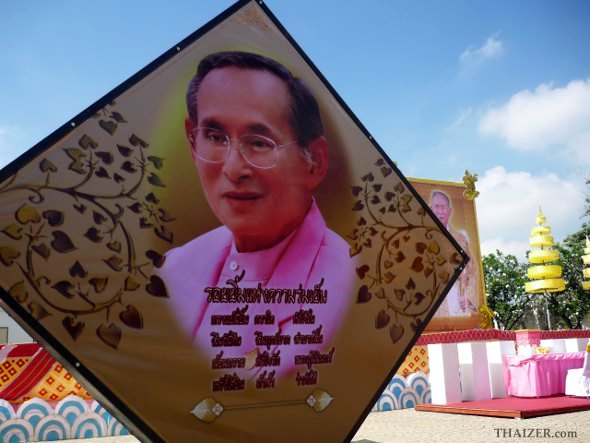This weekend sees the culmination of festivities for the King of Thailand’s 82nd birthday. The celebrations have been extended and have given the Thai people the opportunity to pay their respects to the king. Many Thai people have been wearing pink shirts because pink has become a colour associated with His Majesty’s good health. Tens of thousands of pink wristbands inscribed with ‘Long Live the King’ were sold in the run up to the king’s birthday which was on December 5.
In Thailand, every day of the week has a lucky or auspicious colour associated with it. Traditionally, Thai people would wear the ‘correct’ colour for the particular day of the week. In modern times the practice has been on the decline, but in 2006 there was a revival of wearing yellow on a Monday sparked by the celebrations to mark the king’s 60th anniversary as monarch. Millions of Thais took to wearing yellow polo shirts on a Monday in honour of the king. The Thai king was born on a Monday and so yellow is his auspicious colour and consequently is also the colour of the king’s flag. The custom of wearing yellow on Monday continued into the following year with the king celebrating his 80th birthday on December 5, 2007.
In recent years, King Bhumibol Adulyadej has not enjoyed the best of health and has required hospital treatment on a number of occasions. When the king was released from hospital in November 2007, he wore a pink shirt and pink blazer. It was revealed that a Thai astrologer had forecast that wearing pink would help the king to heal and to remain healthy. As a result, a new fashion craze hit Thailand with millions rushing to buy pink polo shirts. These shirts were soon being produced with the royal crest and the words ‘Long Live the King’. However, some astrologers at the time also warned that with so many people now wearing pink it would not bode well because in Thai astrology pink is associated with Mars and so could accentuate the Mars attributes of violence and conflict.

In June 2008, political protests by the People’s Alliance for Democracy (PAD) were stepped up. They culminated in November 2008 with the closure of Bangkok’s international airport which resulted in worldwide headlines. The PAD movement are ultra-royalist and adopted the colour yellow to show their loyalty to king and country. The pro-Thaksin Shinawatra government was eventually brought down and in December 2008 the leader of the Democrat Party, Abhisit Vejjajiva, was installed as the new prime minister for Thailand. However, that was not the end of the political problems or in-fighting. The pro-Thaksin red shirt movement now took centre stage with violent clashes witnessed in Bangkok over the Songkran holiday in April 2009.
With the colours yellow and red now having political significance in Thailand, many Thai people have taken the decision not to wear either colour. Although some people still wear yellow on Monday in honour of the king, there are far less than there were before the colour became associated with the PAD movement. Instead, many Thais have taken to wearing pink in honour of His Majesty.